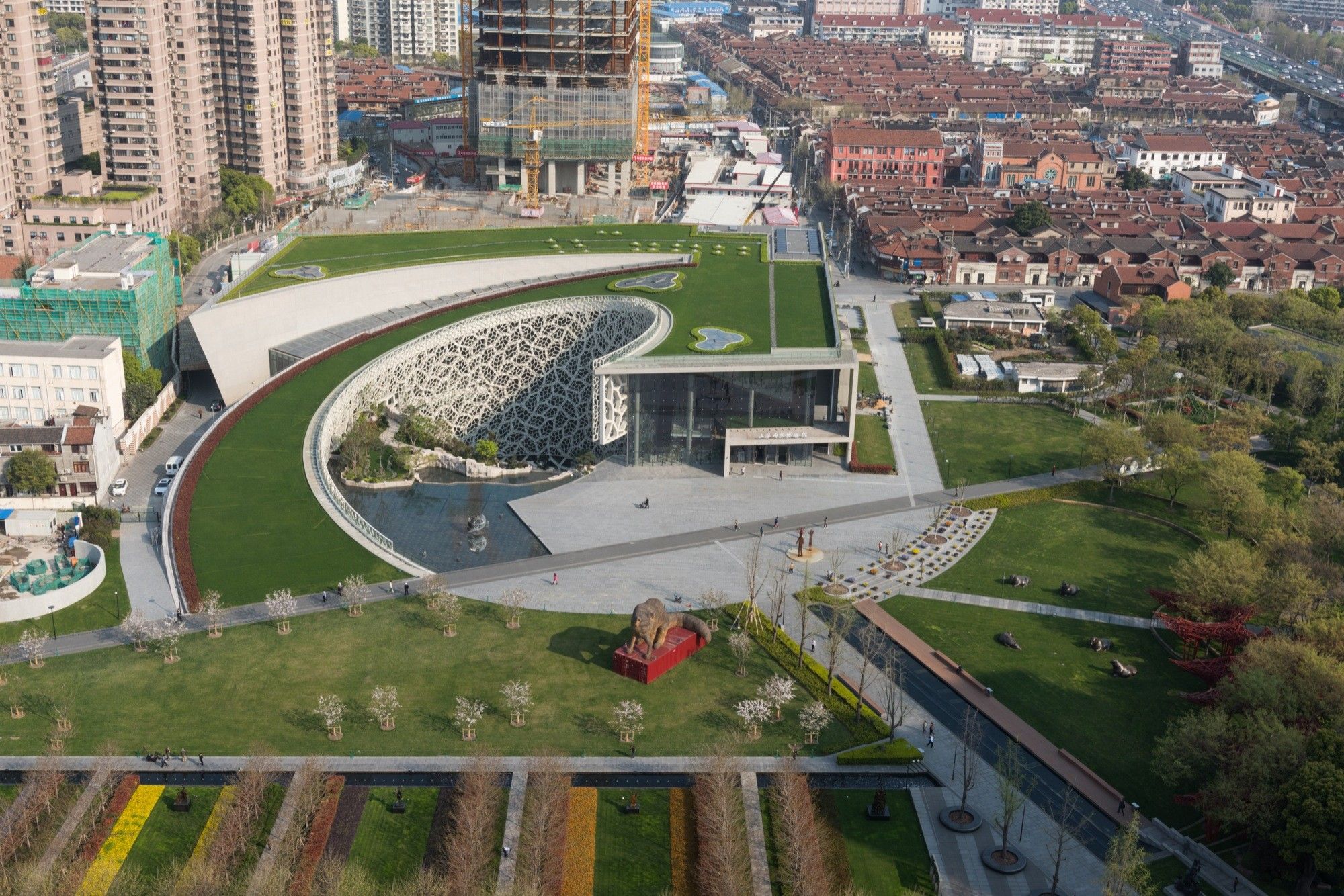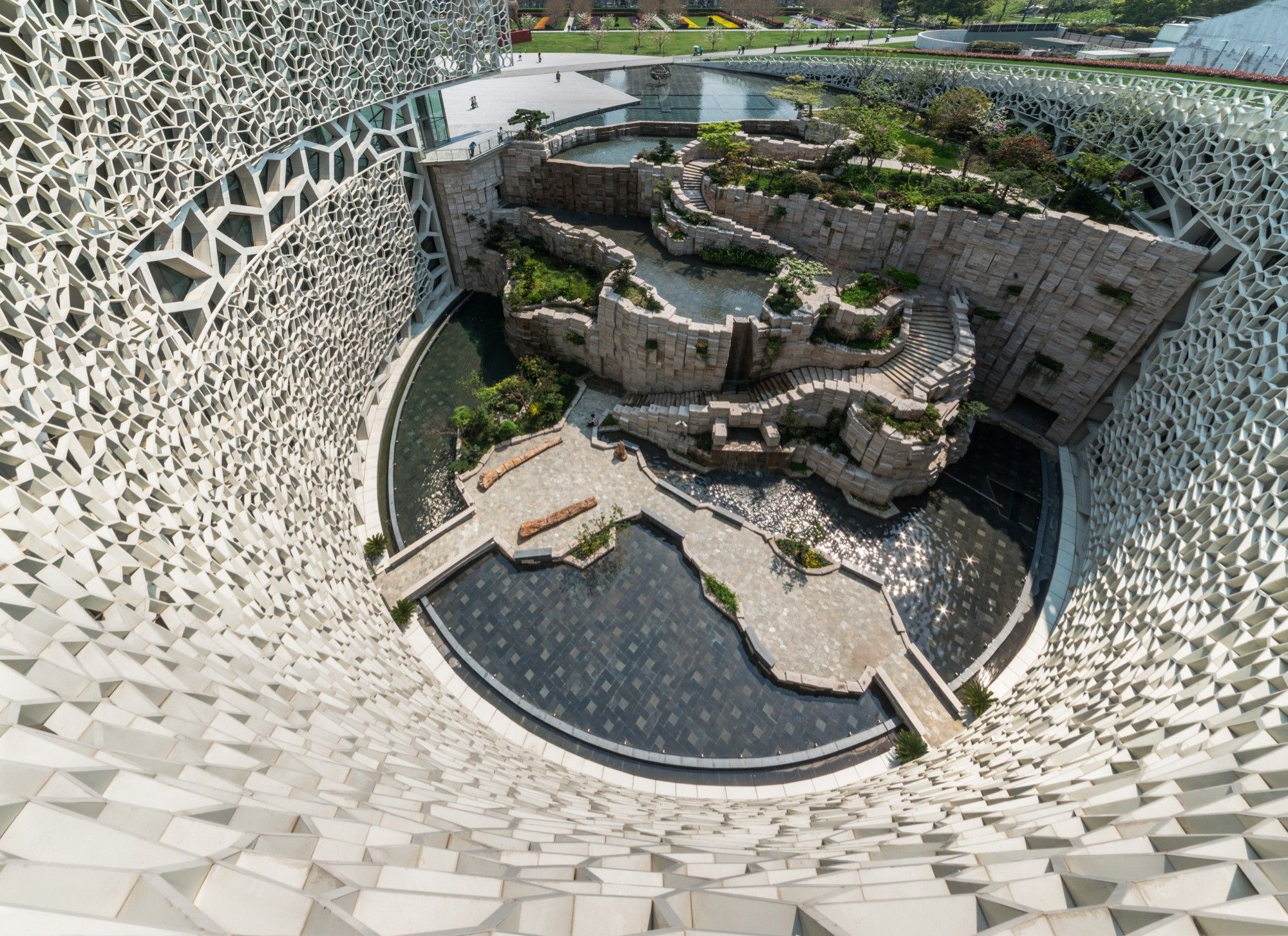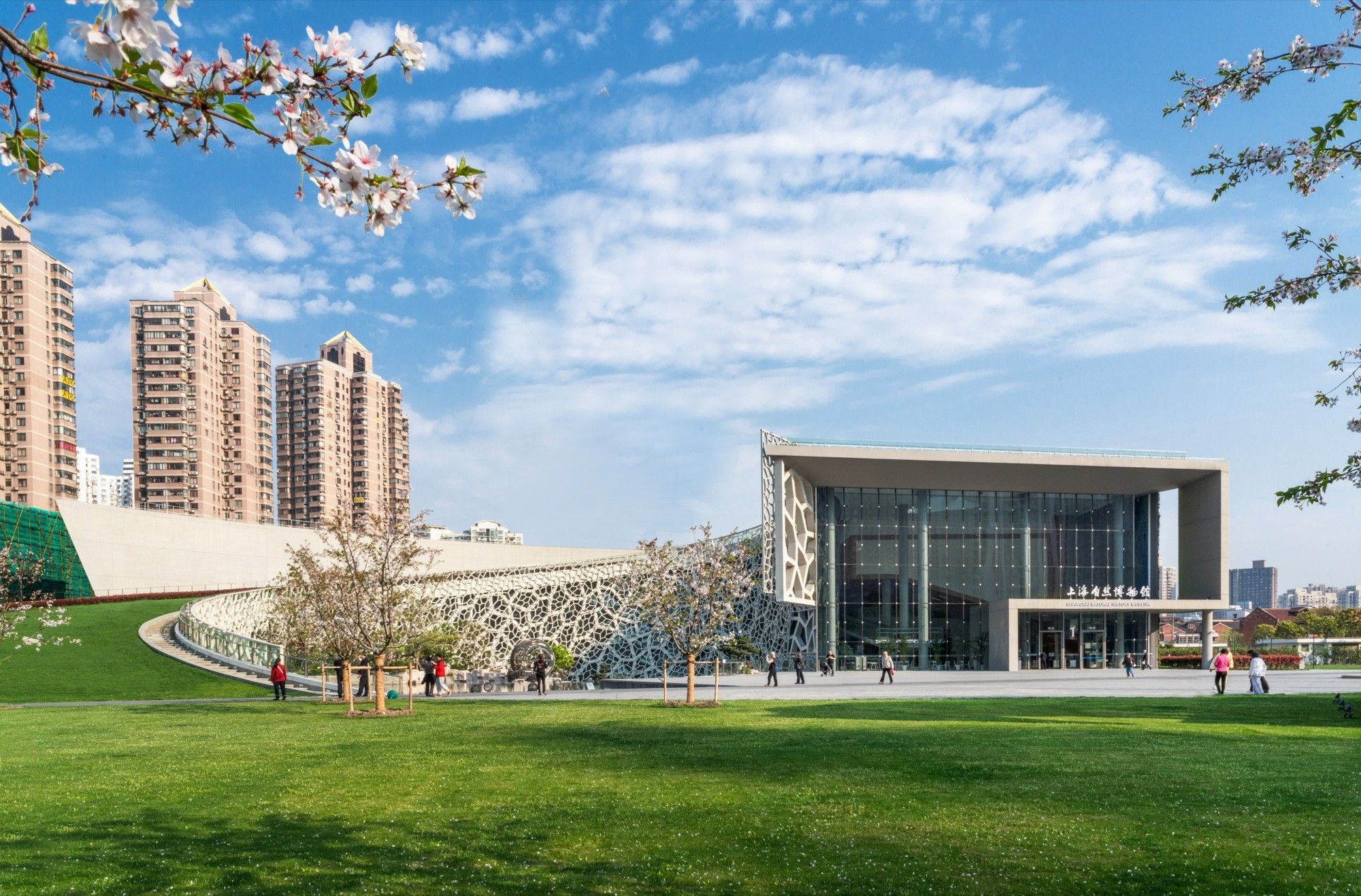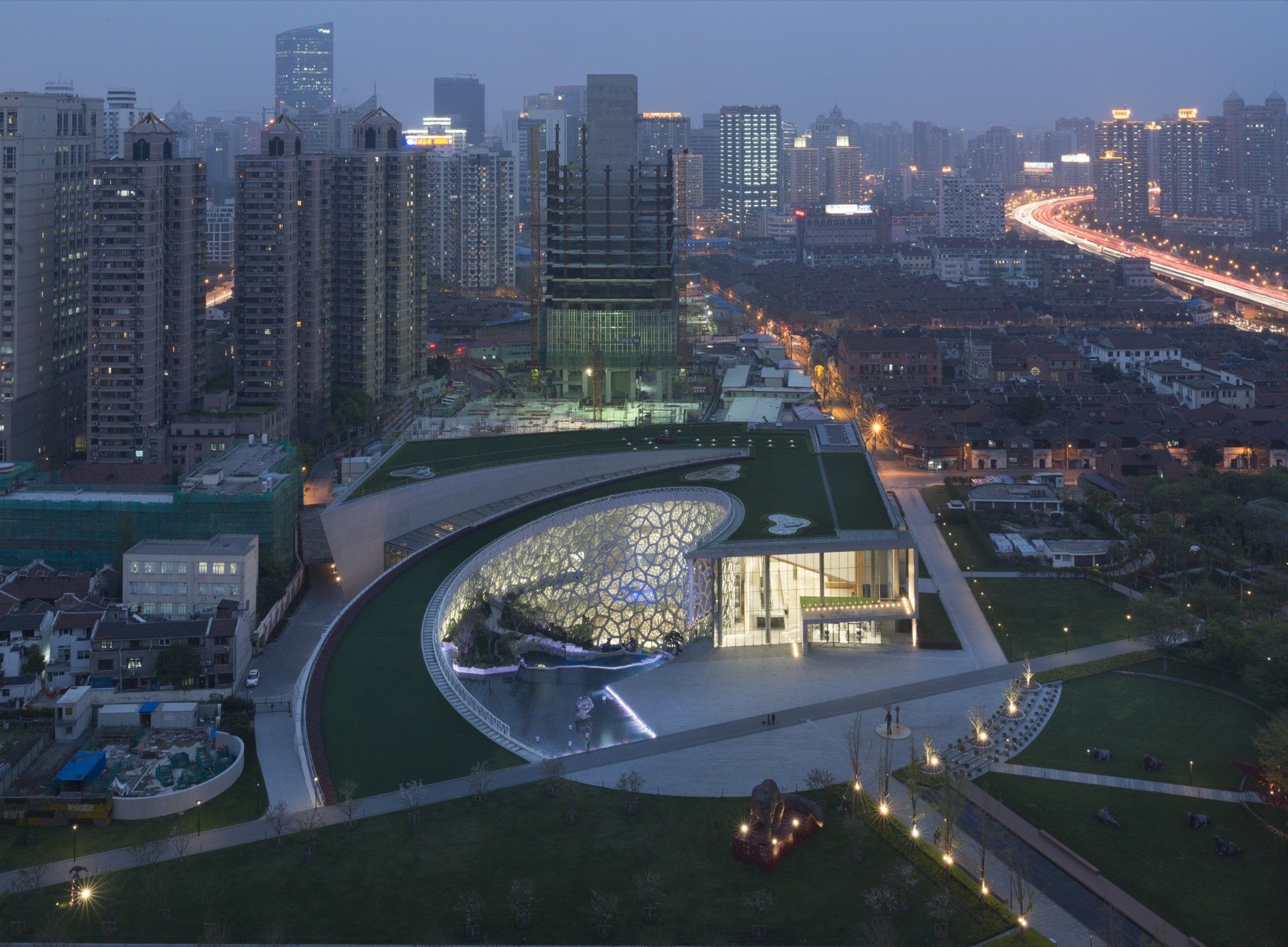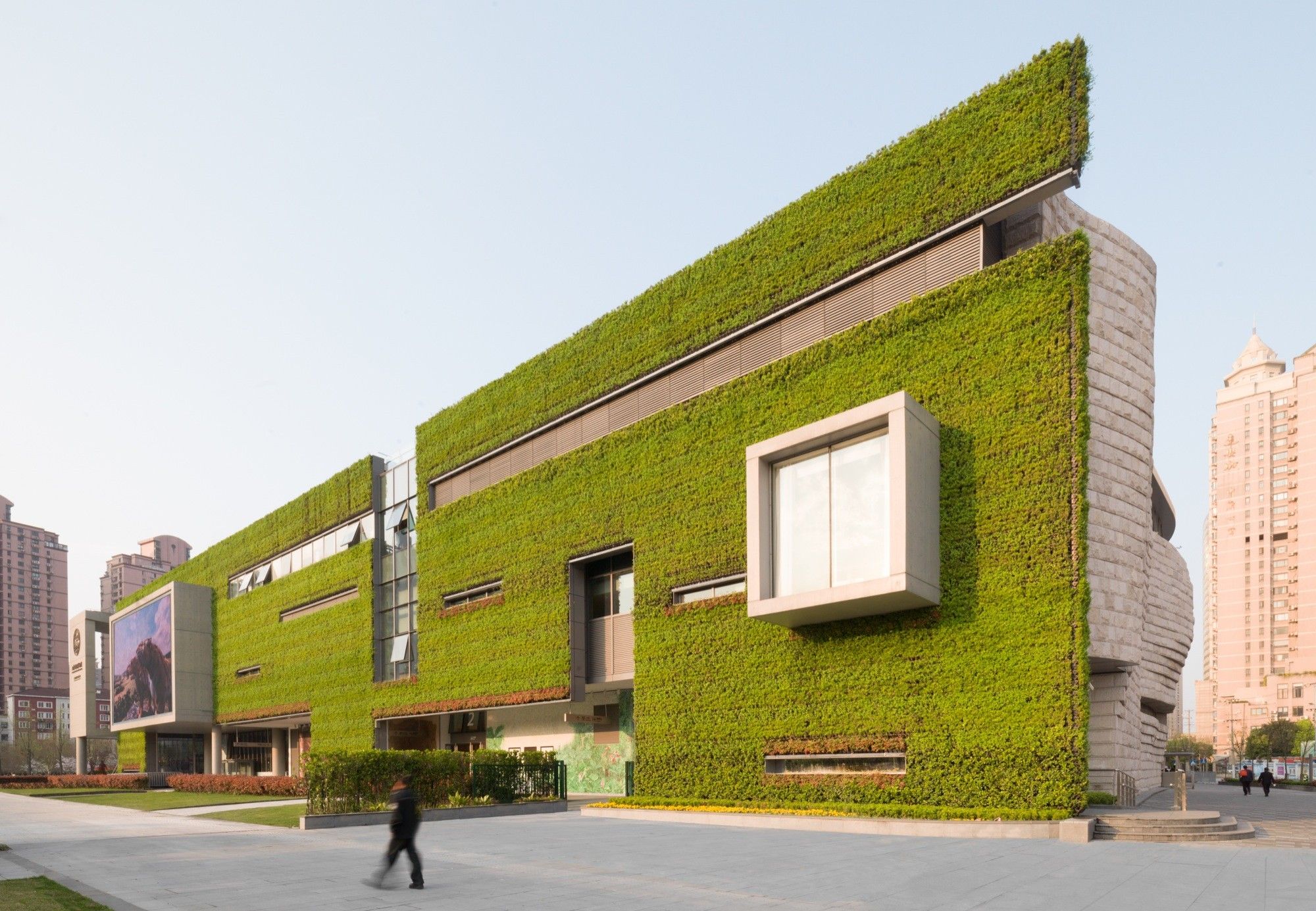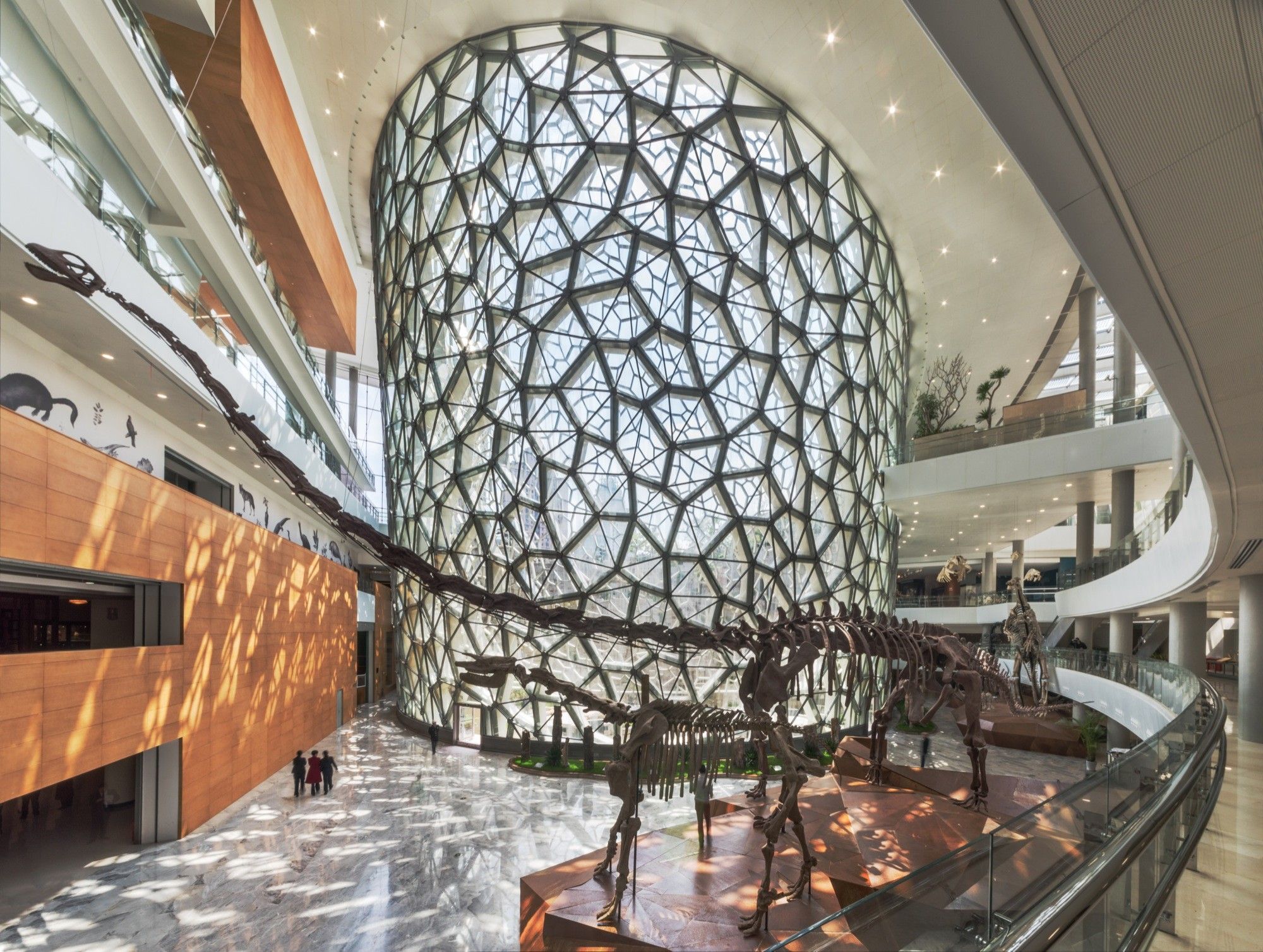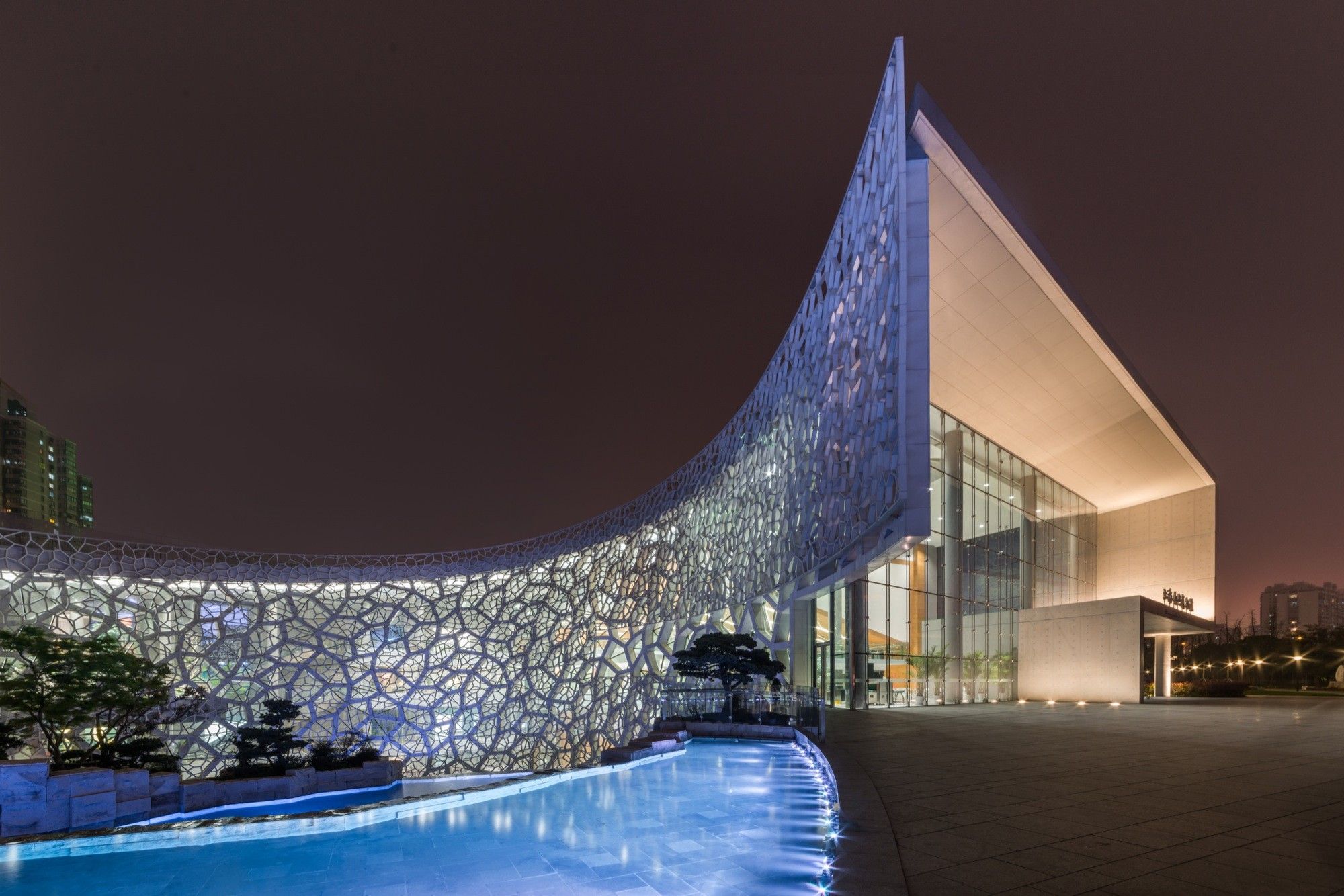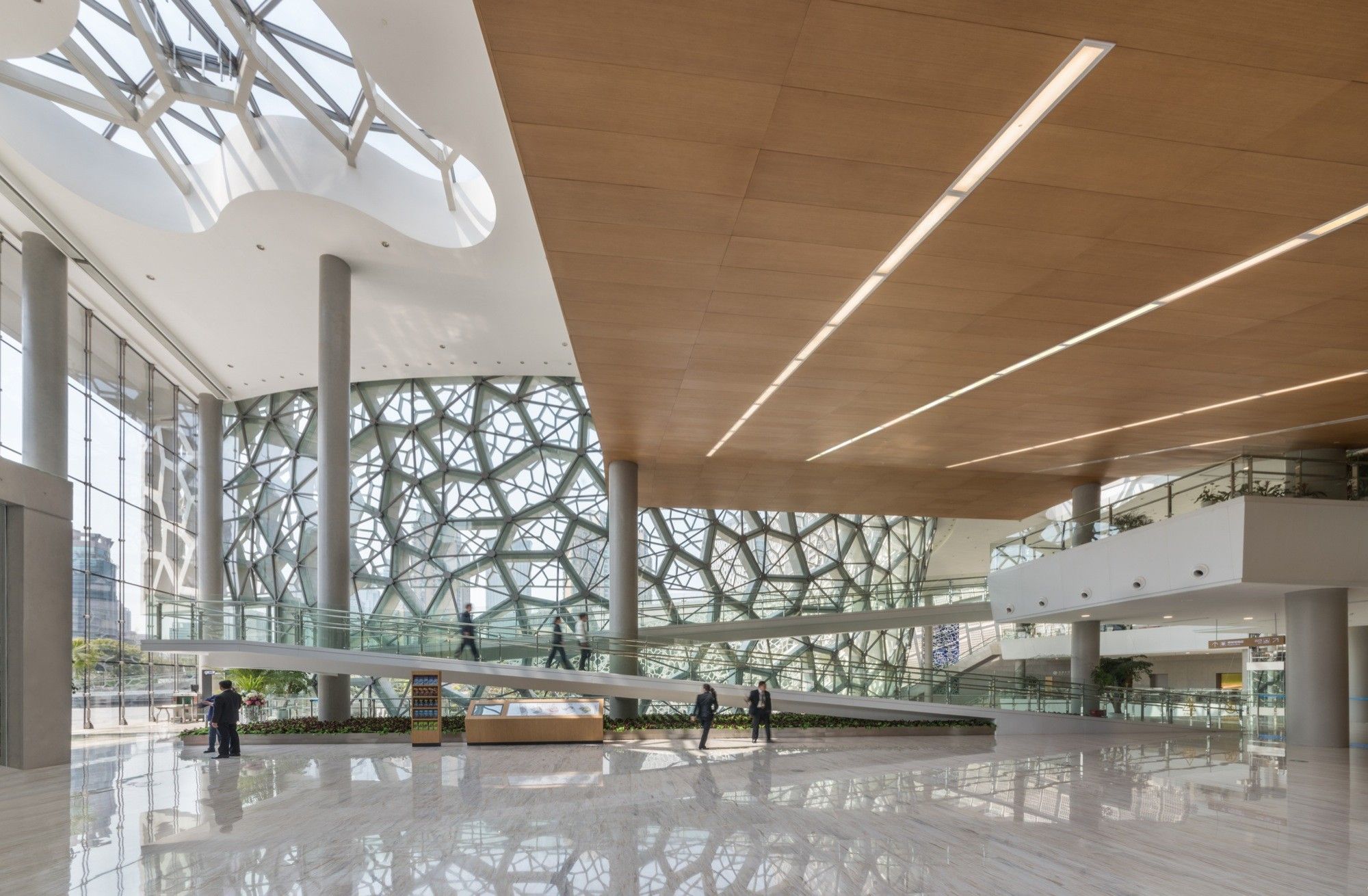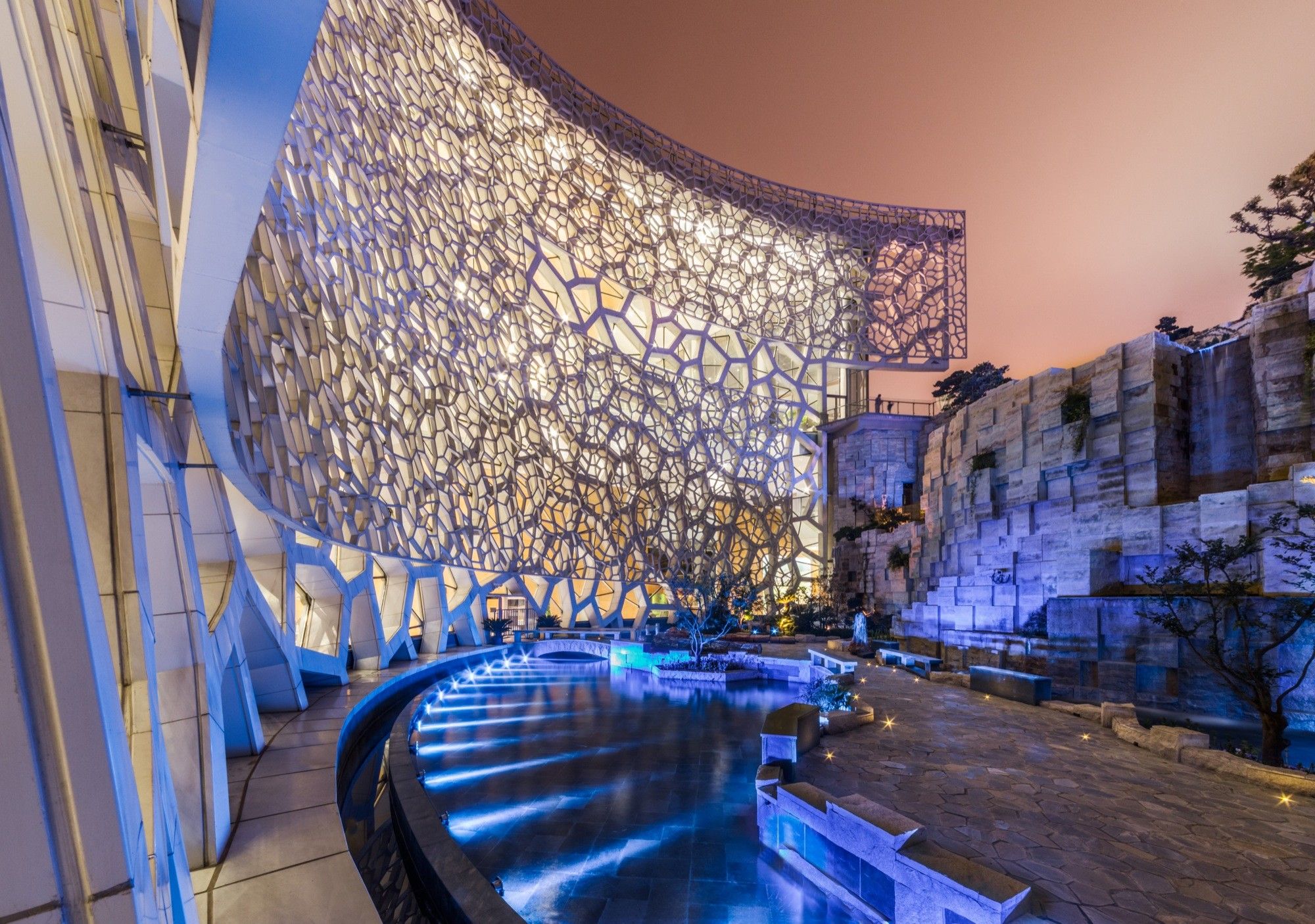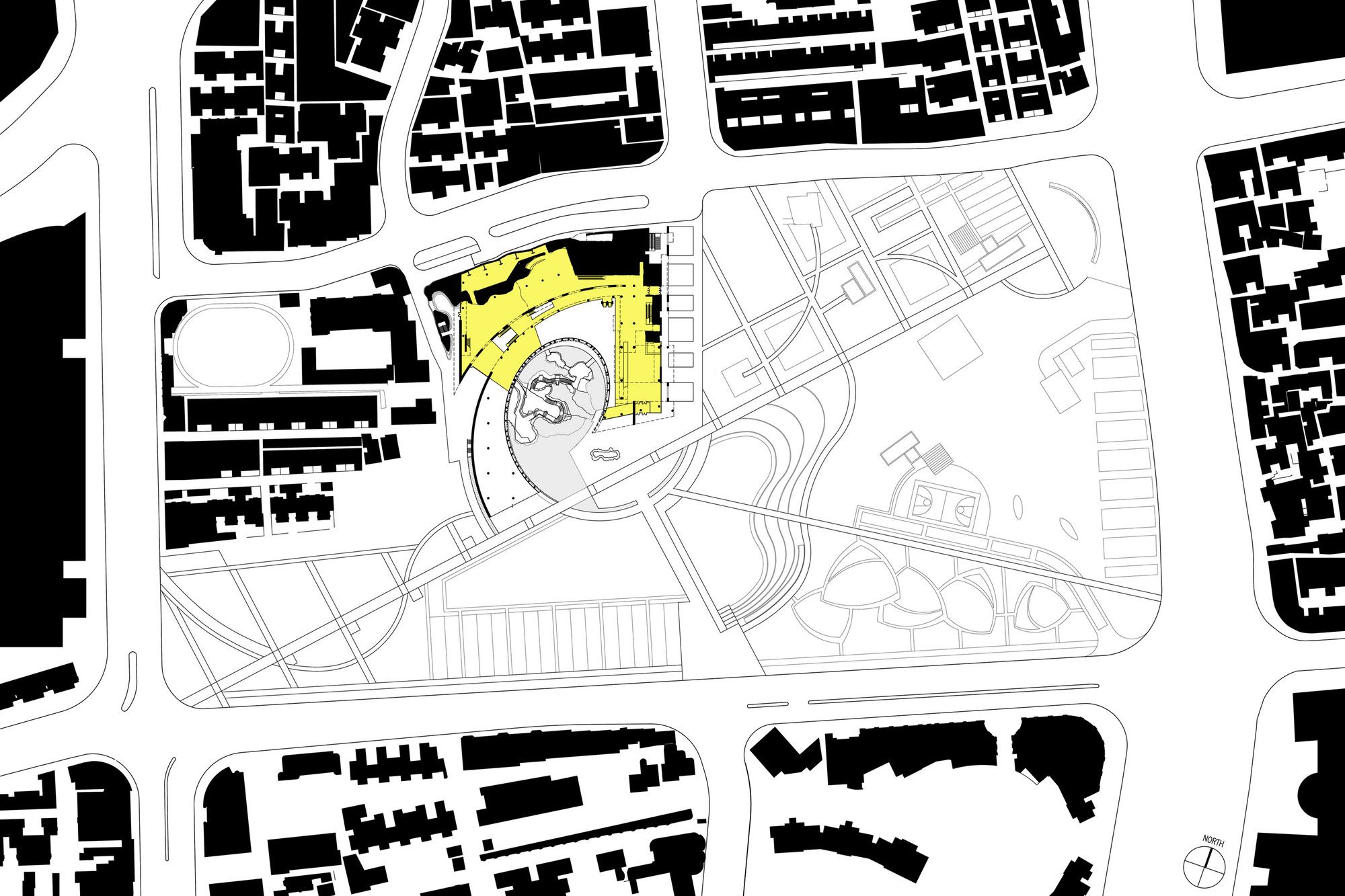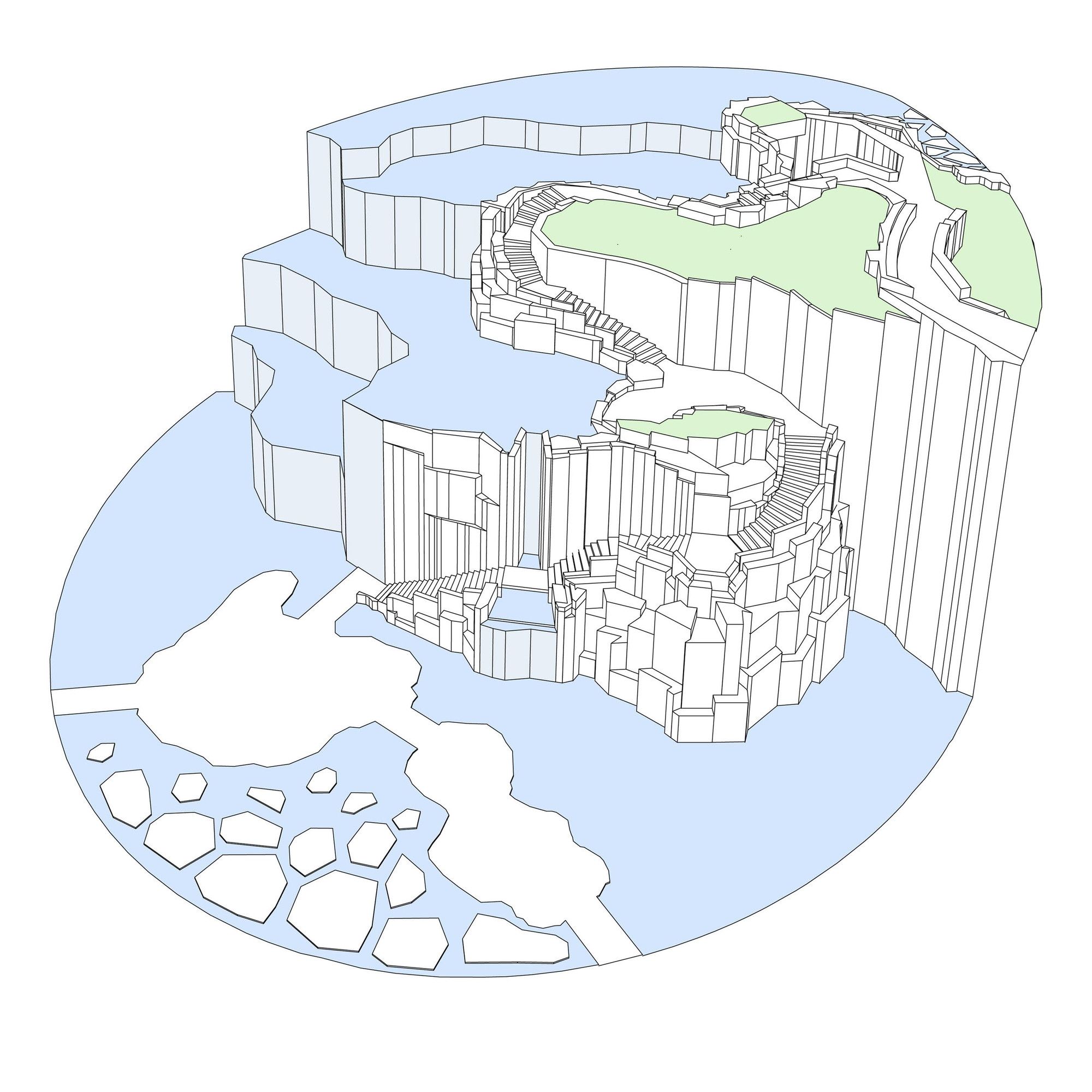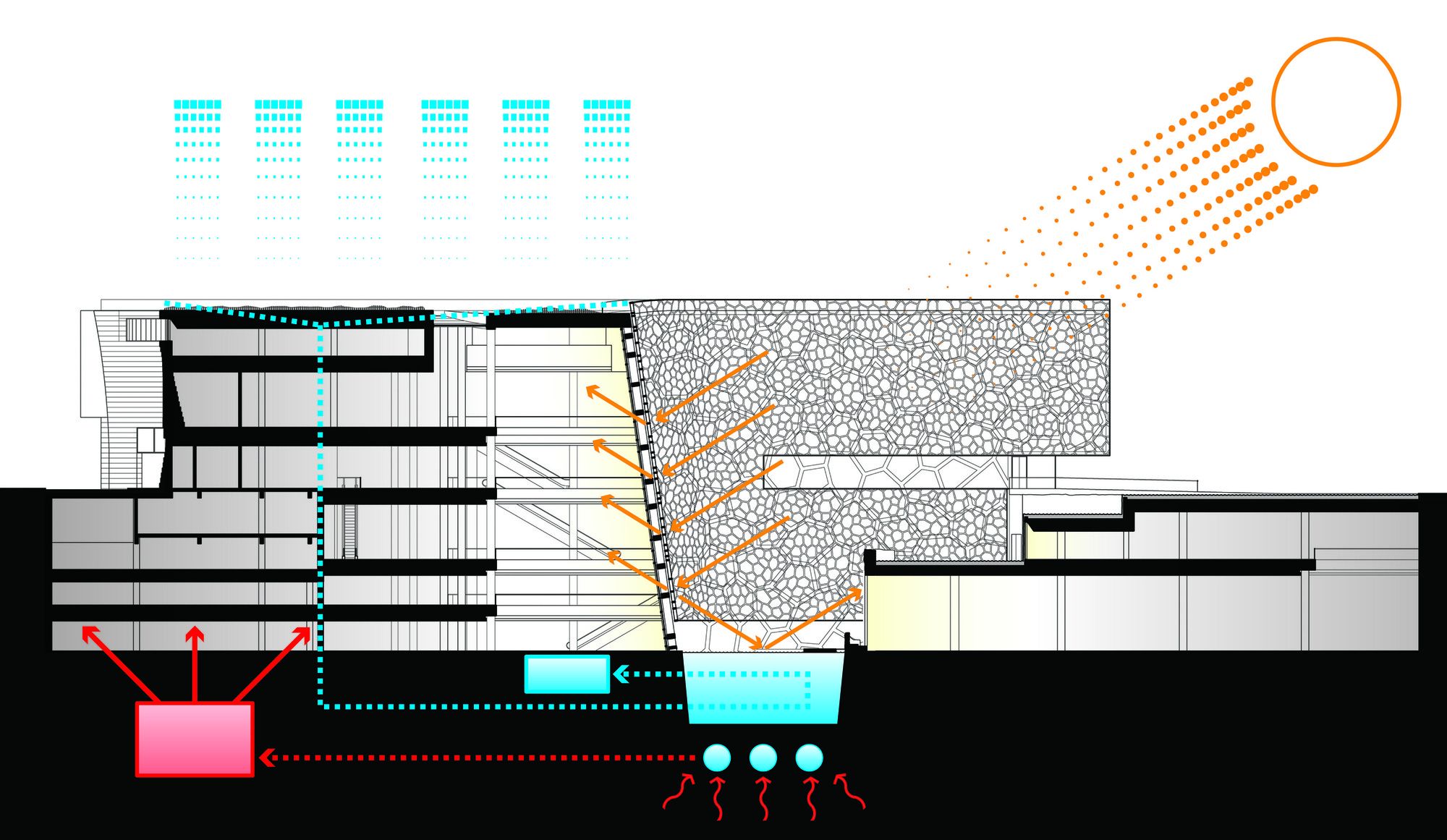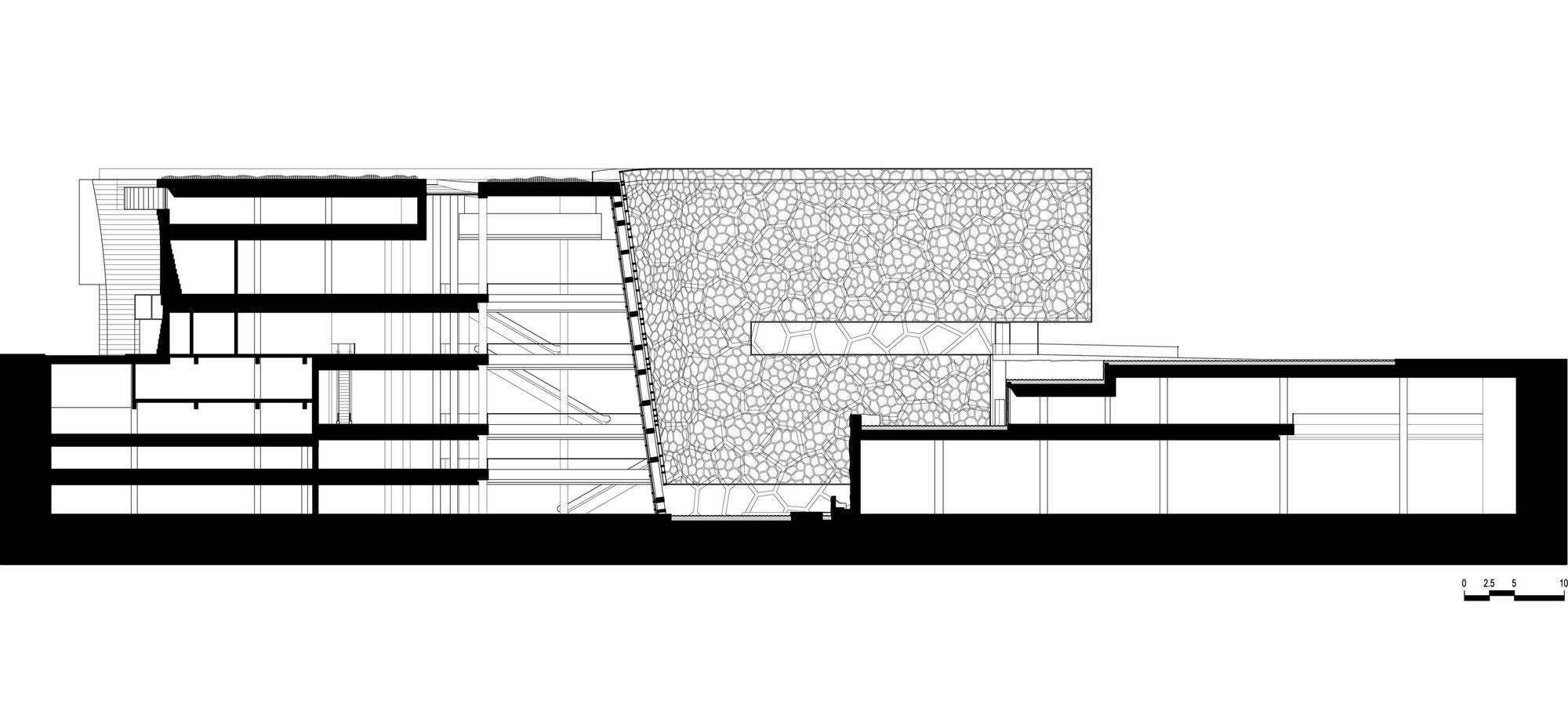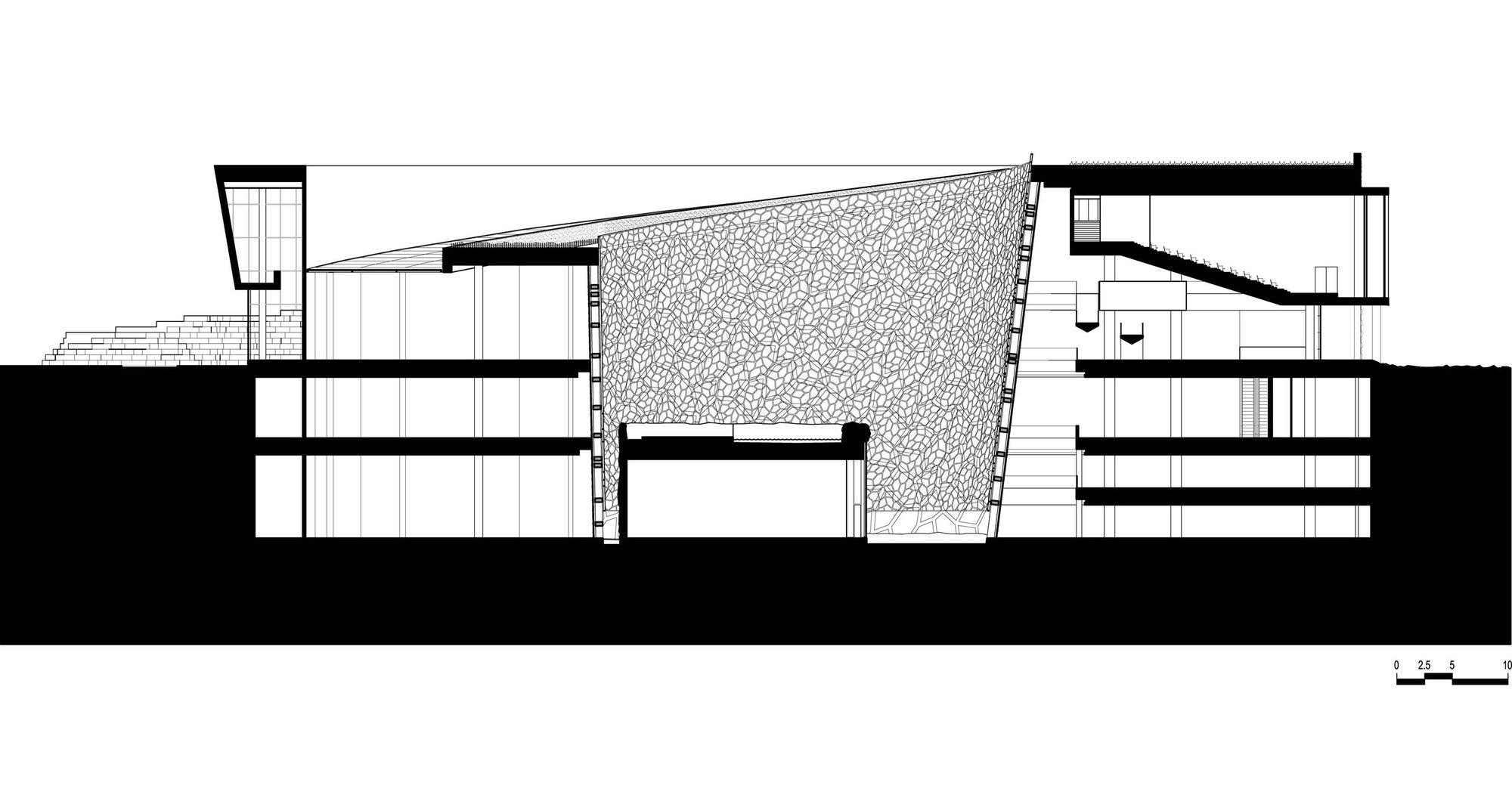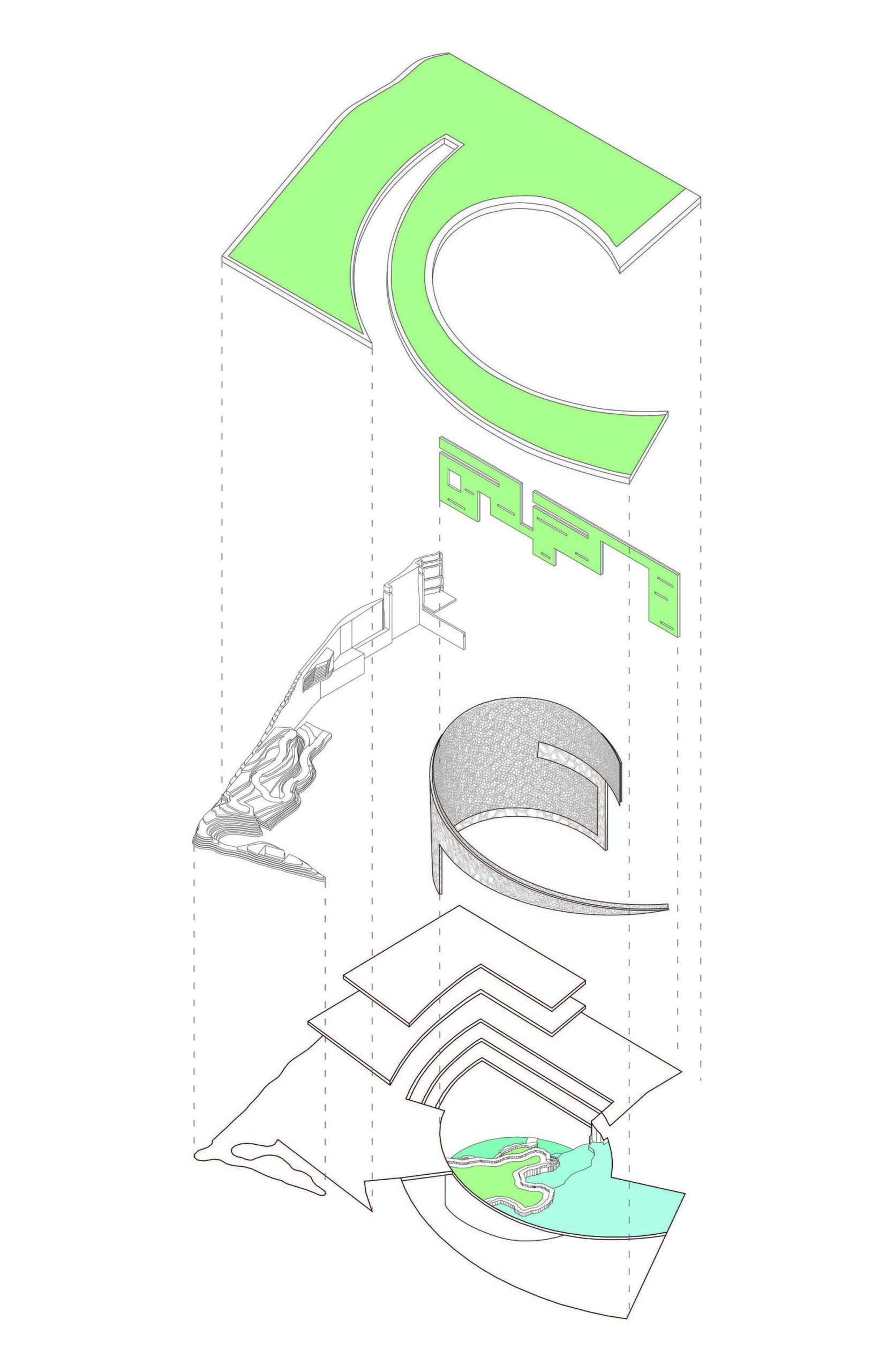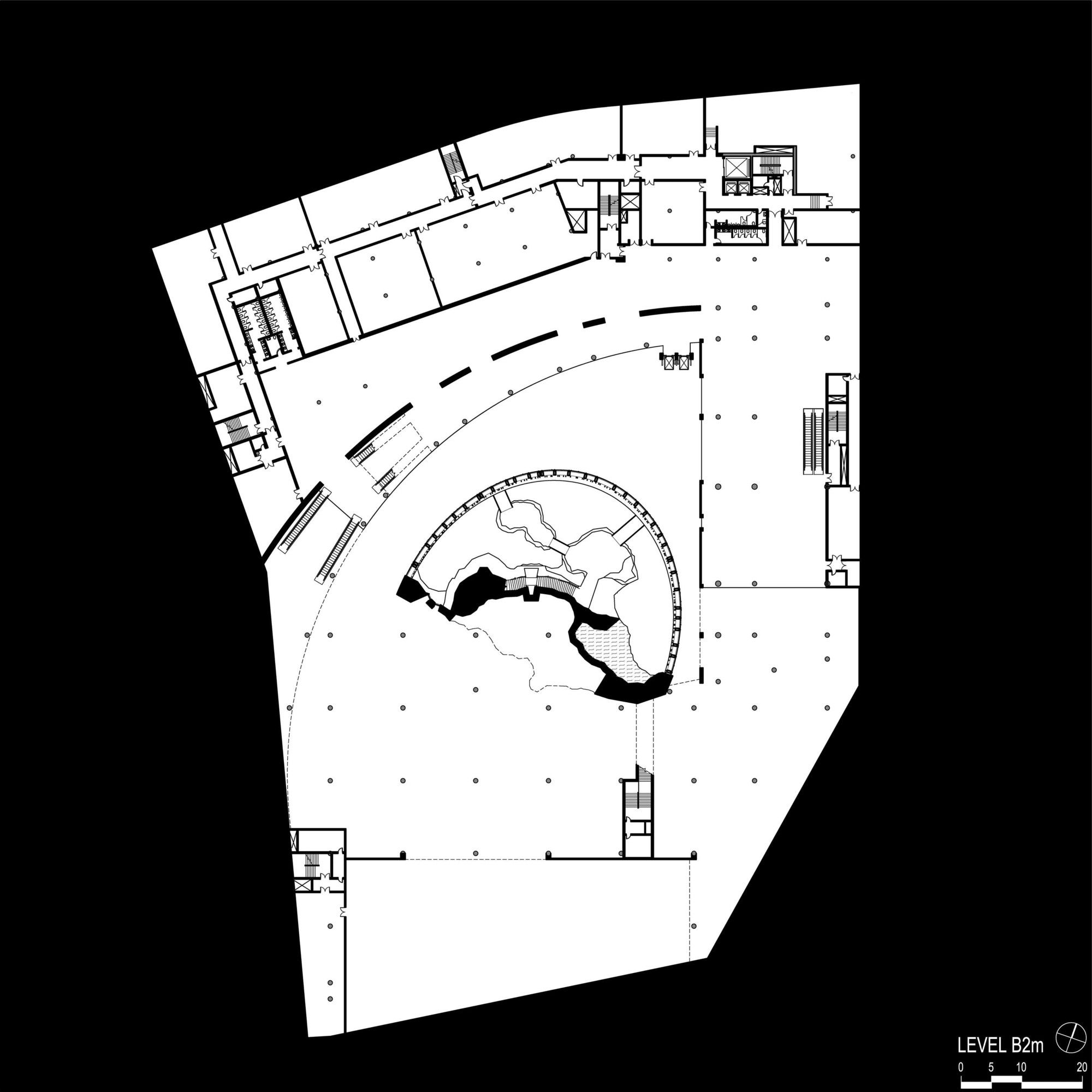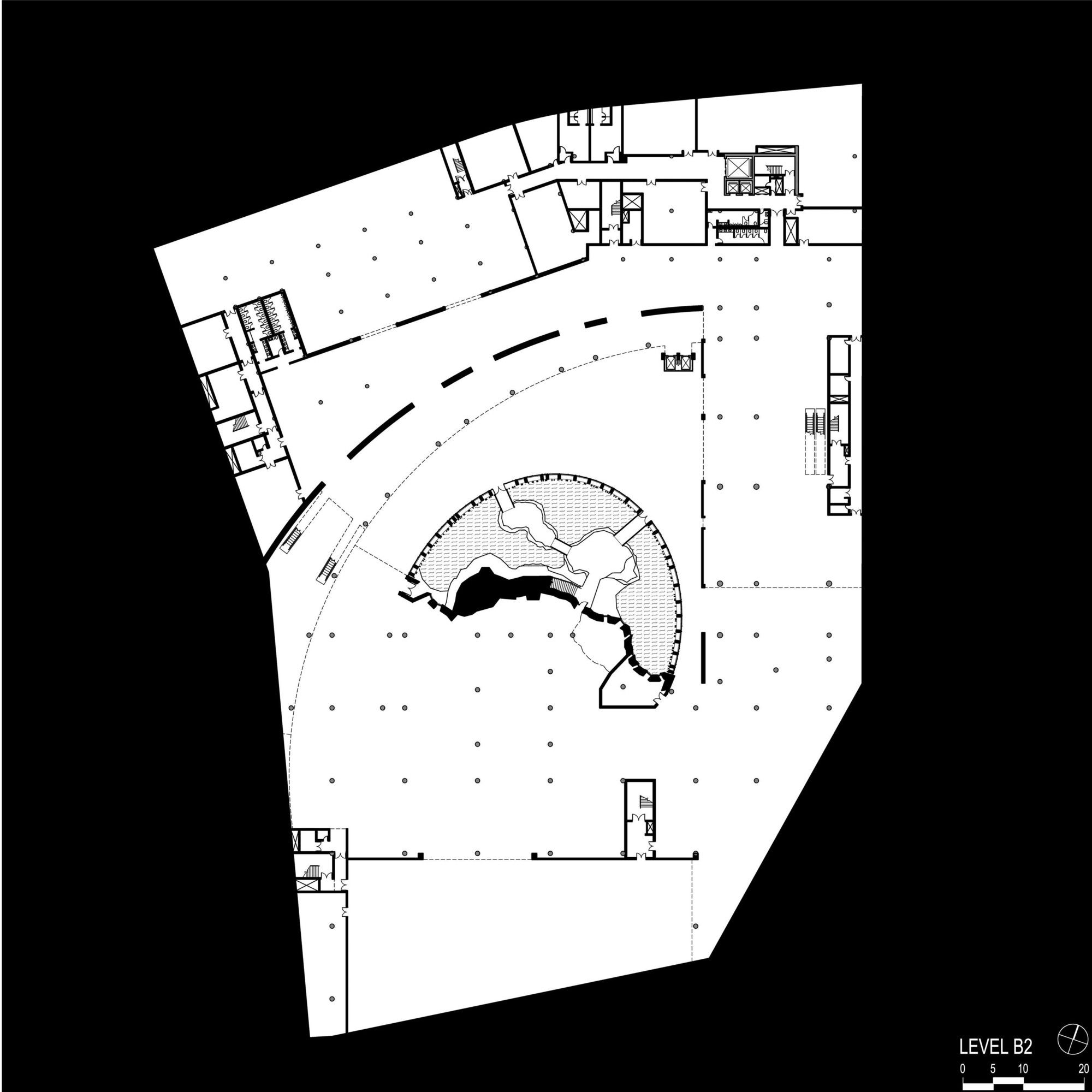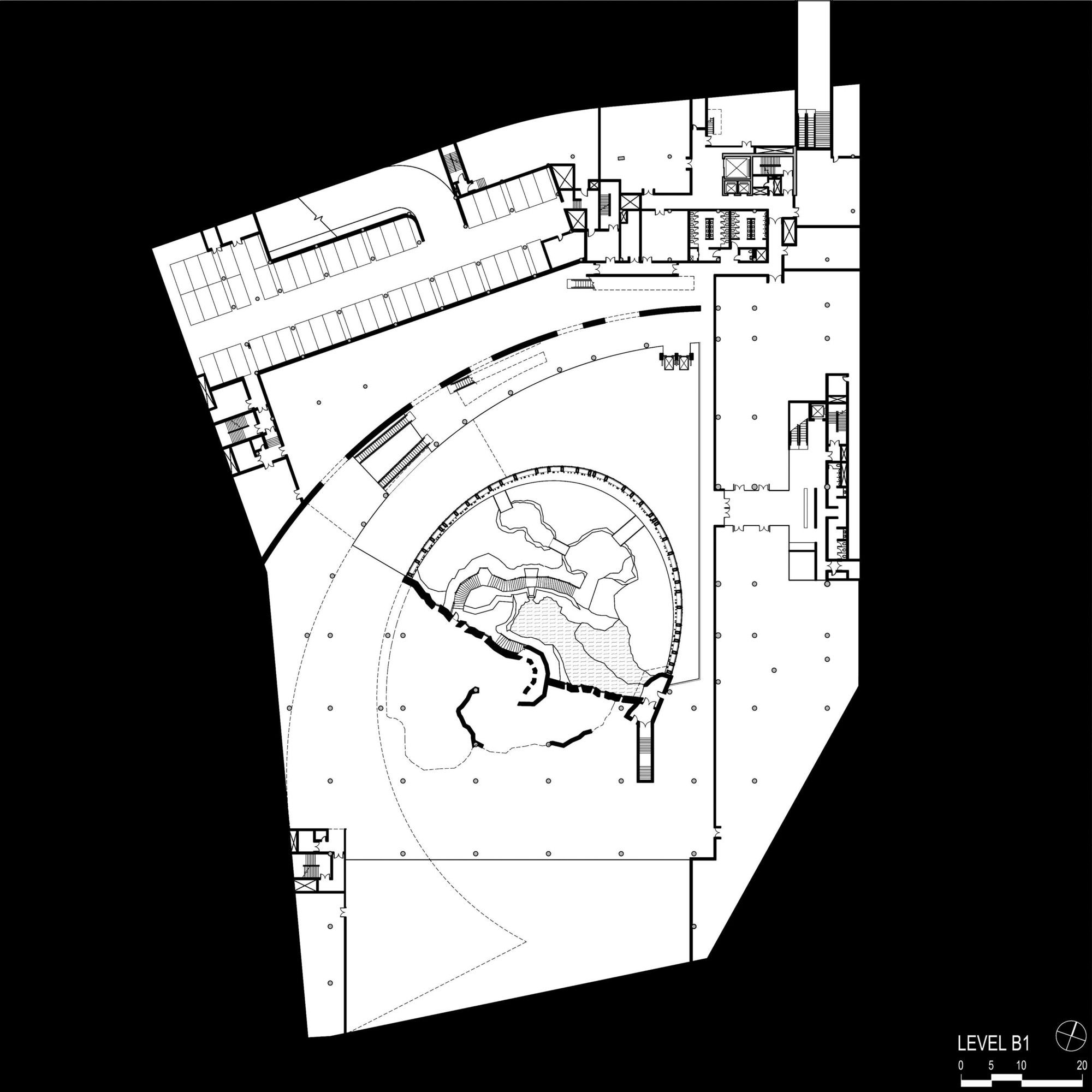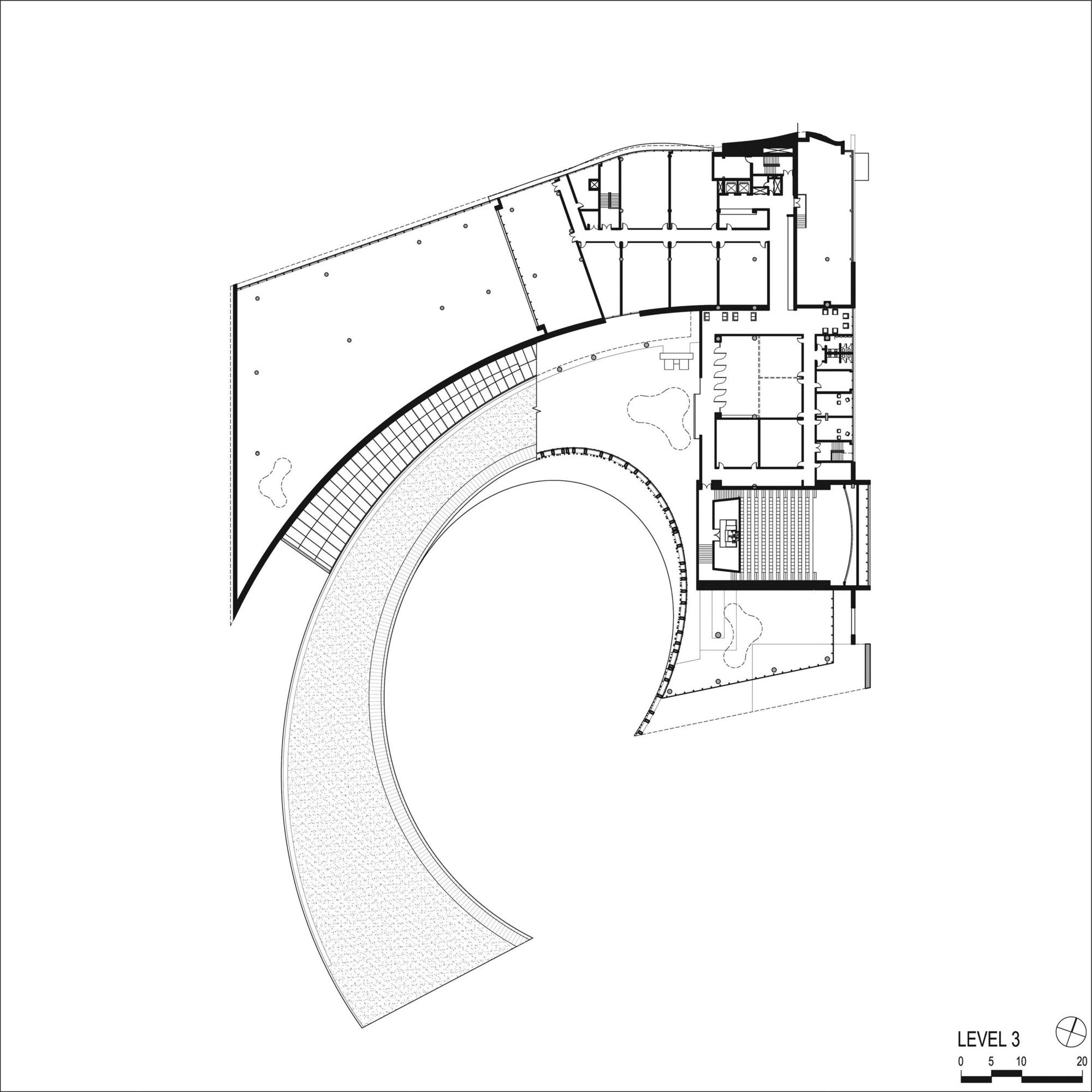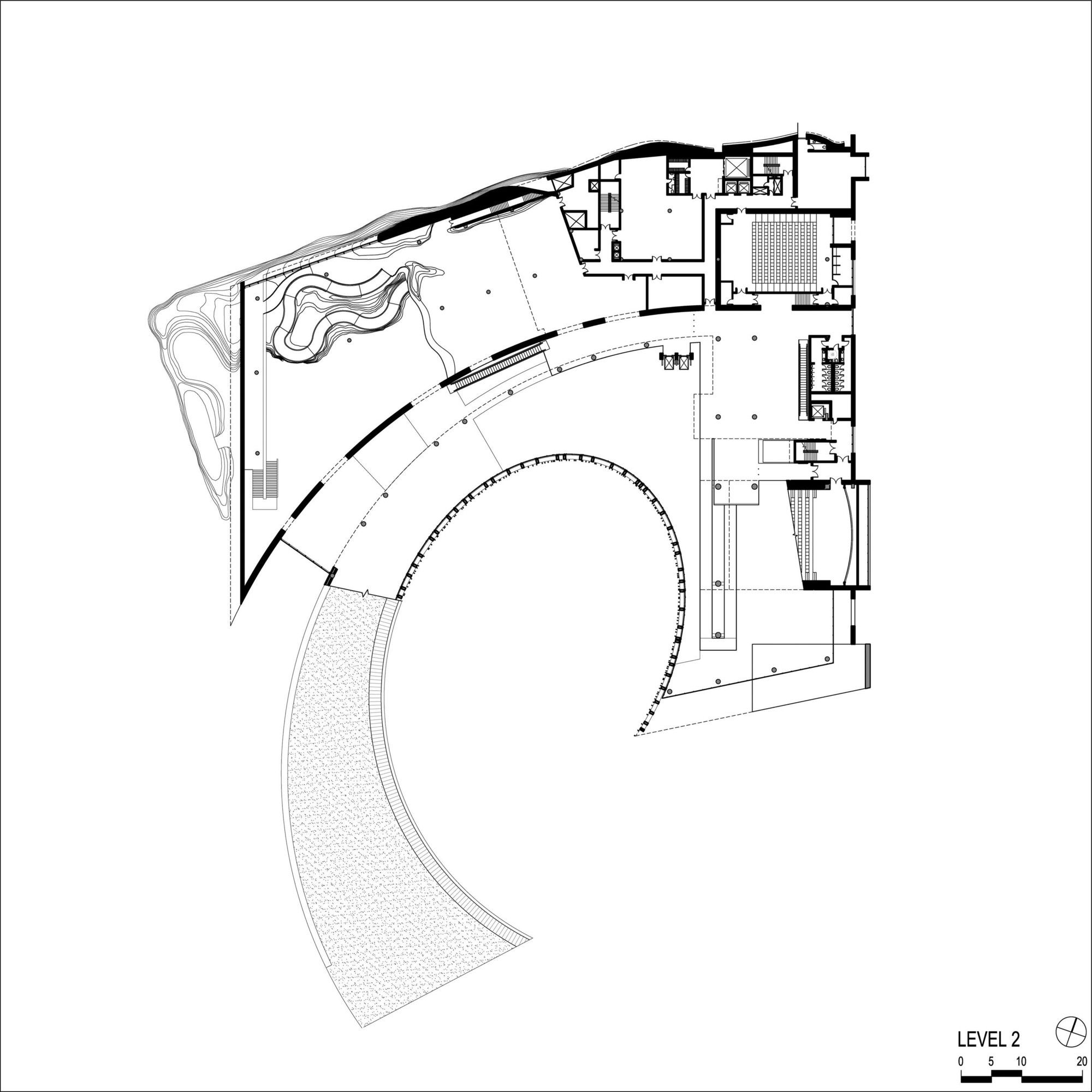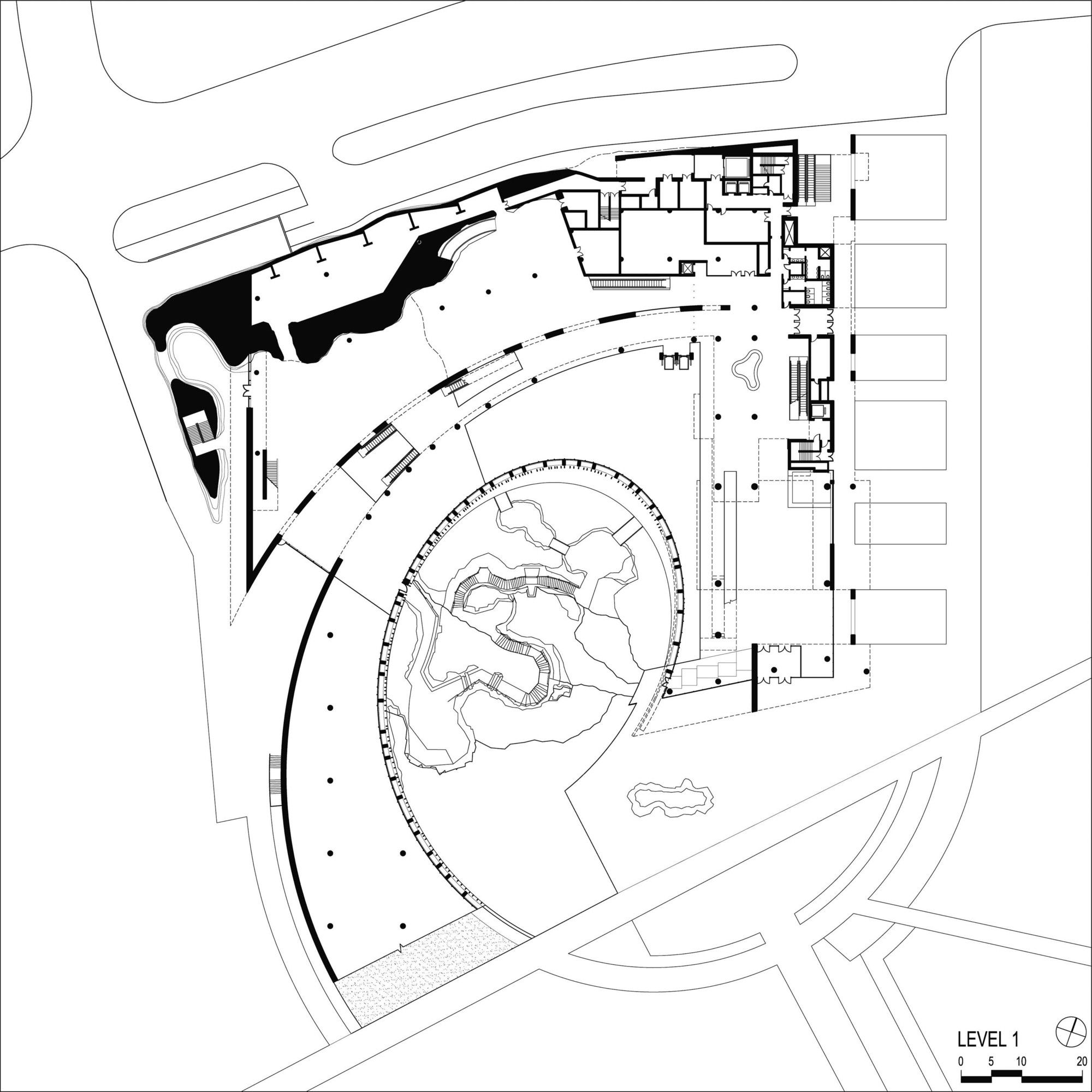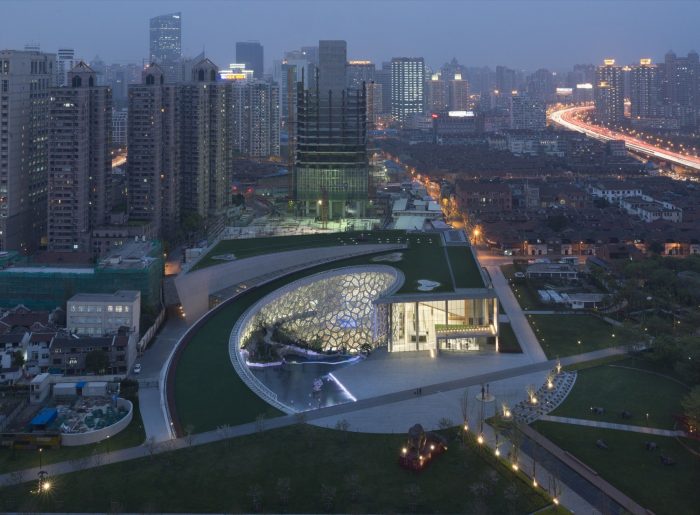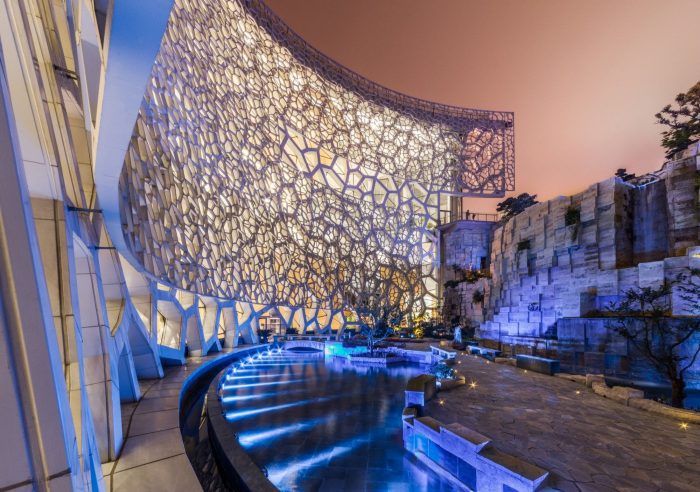Shanghai Natural History Museum| Perkins and Will
Museums today are unable to attract the masses. Despite this being the case, we see more and more museums being constructed and some of these, are striving towards creating a better experience through architecture. The Shanghai Natural History Museum designed by Perkins+ Will is a testimony to this and will be completely successful in changing the public outlook towards museums.
The beauty of this museum lies in that having been inspired by nature, it feels like nature itself. The overall planning revolves around the basic shape of a nautilus shell, the perfect geometric form found in nature. The shell starts with a sloping roof beginning at ground level and culminates in an oval pond.
The designers have managed to fit in different concepts and elements in its façade without overdoing anything. The museum features a 30-meter tall atrium covered with a glass wall, the character of which has been inspired by the cellular structure of plants and animals. Light pours in through this striking feature and through the central wall forming the shell. The eastern wall is a living wall and signifies earth’s vegetation, while the northern stone wall within the shell signifies “shifting tectonic plates and canyon walls eroded by rivers.” The north wall also gives the central space a character of an old fort or a castle. Each wall holds its own individuality while enhancing the overall impact of the museum as a whole.
Bioclimatic design features have been incorporated into the design as well. The building has an intelligent skin that maximizes daylight and minimizes solar gain. The pond imparts evaporative cooling by collecting rainwater from the vegetated roof, along with using recycled grey water. The temperature of the building is regulated by a geothermal system, using energy from Earth for heating and cooling. One of the exhibits will also explain the features and the story of the museum.
A total area of 44,517 square meters has allowed the museum to increase its capacity 20 times the existing museum. It will display more than 10,000 artifacts from all seven continents and will also feature a 4D theatre and an outdoor exhibit garden.
- Architects: Perkins+Will
- Project Year: 2015
- Photographs: James and Connor Steinkamp
